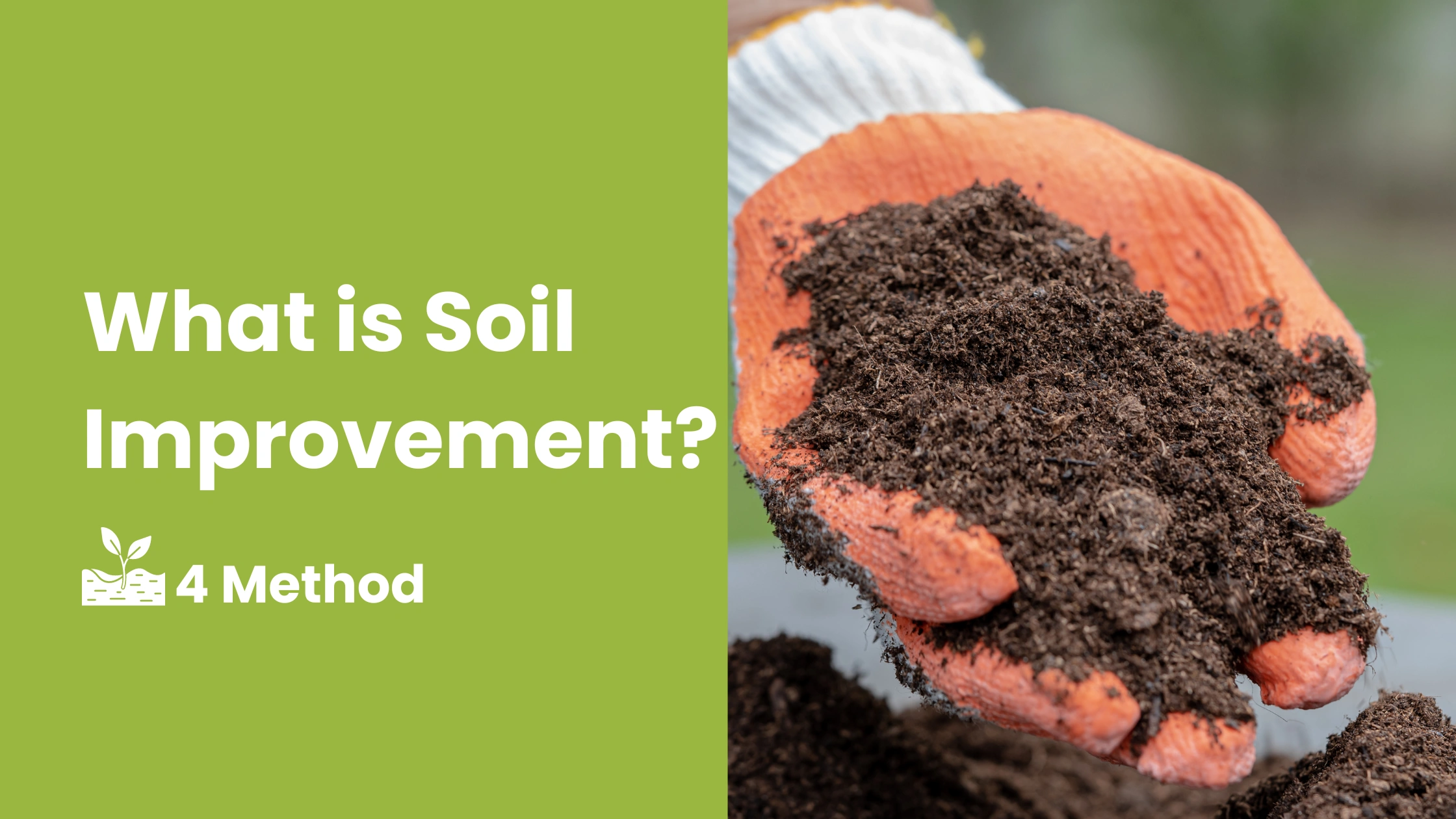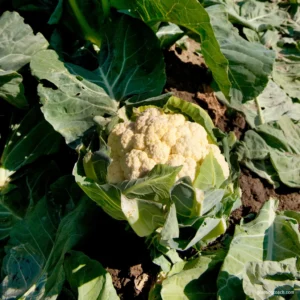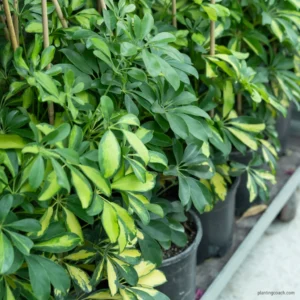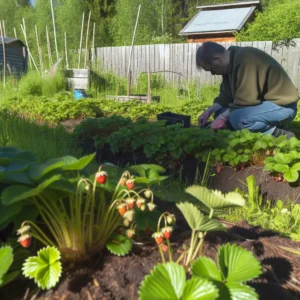Soil, often called the lifeblood of agriculture, is the fundamental substrate for plant growth, providing essential nutrients, water, and structural support. However, not all soils are created equal, and many suffer from degradation due to erosion, compaction, and nutrient depletion. This brings us to the pivotal question:
What is soil improvement?
Soil improvement encompasses a range of practices and techniques to enhance soil health, fertility, and structure to optimize plant growth and productivity. It involves a holistic approach that addresses both the physical and chemical properties of soil and its biological components.
This blog post will delve deep into soil improvement, exploring its significance in agriculture, gardening, and environmental sustainability. By understanding the principles of soil improvement, farmers, gardeners, and land managers can implement targeted strategies to rejuvenate and maintain the health of their soil, ultimately leading to healthier plants, higher yields, and a more resilient ecosystem.
Soil Composition
Soil is a complex mixture of minerals, organic matter, water, air, and living organisms, all interacting to create a dynamic ecosystem beneath our feet. The soil composition is critical in determining its fertility, structure, and ability to support plant life.
At its core, soil consists of three primary components: mineral particles, organic matter, and pore spaces. Mineral particles, such as sand, silt, and clay, comprise the inorganic fraction of soil and provide the physical framework. Sand particles are the largest and offer good drainage but have poor water and nutrient retention. Silt particles are smaller and have moderate drainage and fertility properties. Clay particles are the smallest and offer high fertility and water retention but can also lead to poor drainage and compaction issues.
Organic matter, derived from decaying plant and animal residues, is another crucial component of soil. It serves as a source of plant nutrients, improves soil structure, enhances water retention, and fosters beneficial microbial activity. Organic matter content varies widely depending on climate, vegetation, and land use practices.
Pore spaces within the soil matrix are essential for air and water movement, root penetration, and microbial activity. The arrangement of pore spaces influences soil aeration, drainage, and water-holding capacity. Ideally, healthy soil should have a balance of pore sizes to facilitate adequate air and water movement.
Poor Soil Health
Healthy soil serves as the foundation for robust plant growth and productivity. However, various factors can compromise soil health, leading to diminished fertility, reduced plant vigor, and lower yields. Recognizing the signs of poor soil health is crucial for implementing timely interventions to rejuvenate and restore soil vitality.
1. Compacted Soil:
Compaction occurs when soil particles are pressed together, reducing pore spaces and impeding the movement of air, water, and roots. Compacted soil exhibits poor drainage, limited root penetration, and increased runoff, making it difficult for plants to access essential nutrients and moisture.
2. Soil Erosion:
Soil erosion, caused by wind, water, or human activities, strips away valuable topsoil and organic matter, reducing soil fertility and structural stability. Signs of erosion include exposed roots, gullies, sediment accumulation in water bodies, and loss of soil structure.
3. Nutrient Deficiency:
Poor soil health often manifests in nutrient deficiencies, where essential elements like nitrogen, phosphorus, potassium, and micronutrients are lacking or imbalanced. Nutrient deficiency symptoms include stunted growth, yellowing leaves, poor fruit set, and increased susceptibility to pests and diseases.
4. Soil pH Imbalance:
Soil pH influences nutrient availability, microbial activity, and plant uptake of minerals. Acidic soils (low pH) can lead to aluminum and manganese toxicity, while alkaline soils (high pH) can cause nutrient lockup. Testing soil pH and observing symptoms like chlorosis, leaf browning, or stunted growth can indicate pH-related issues.
5. Poor Soil Structure:
Soil with inadequate aggregation and crumbly texture indicates poor soil structure. This hampers root development, water infiltration, and nutrient distribution. Signs of poor soil structure include surface crusting, surface runoff, and difficulty in tilling or digging.
6. Lack of Soil Organic Matter:
Soil depleted of organic matter lacks the nutrients, microbial diversity, and water-holding capacity essential for plant growth. Sparse vegetation, low microbial activity, and pale, lifeless soil indicate organic matter deficiency.
Soil Improvement Techniques

Soil improvement encompasses diverse practices and techniques to enhance soil fertility, structure, and overall health. By combining organic, inorganic, biological, and mechanical methods, growers can rejuvenate depleted soils, optimize nutrient availability, and foster a thriving ecosystem conducive to plant growth. Below are some effective techniques for soil improvement:
A. Organic Soil Improvement Methods:
1. Composting:
Composting involves decomposing organic materials such as kitchen scraps, yard waste, and crop residues into nutrient-rich humus. Compost improves soil structure, enhances water retention, and boosts microbial activity by providing a steady supply of organic matter. To create compost, layer organic materials in a compost bin or pile, ensuring a balance of carbon-rich (e.g., leaves, straw) and nitrogen-rich (e.g., kitchen scraps, manure) materials. Regular turning and proper moisture management accelerate decomposition, yielding nutrient-dense compost ready for incorporation into the soil.
2. Cover Cropping:
Cover cropping involves planting non-commercial crops or green manures to cover and protect bare soil during fallow periods. Cover crops like legumes (e.g., clover, vetch) fix atmospheric nitrogen, improving soil fertility, while grasses (e.g., rye, oats) add organic matter and prevent erosion. Afterward, cover crops are incorporated into the soil, replenishing nutrients and enhancing soil structure. Additionally, cover crops suppress weeds, reduce soil erosion, and promote beneficial microbial activity, making them invaluable for soil improvement.
3. Mulching:
Mulching entails applying a layer of organic or inorganic materials such as straw, wood chips, or plastic to the soil surface. Mulches conserve soil moisture, suppress weeds, regulate soil temperature, and enhance soil structure by gradually decomposing and enriching the soil with organic matter. Organic mulches also attract earthworms and beneficial microorganisms, further improving soil health. Mulching is particularly beneficial in arid regions or during dry periods to minimize water evaporation and maintain soil moisture levels.
B. Inorganic Soil Improvement Methods:
1. Soil Amendments:
Soil amendments are mineral-based substances added to the soil to modify its chemical and physical properties. Common soil amendments include lime, gypsum, and elemental sulfur, which adjust soil pH, improve nutrient availability, and enhance soil structure. Lime raises soil pH in acidic soils, while gypsum improves soil structure by reducing compaction and improving drainage. Soil amendments should be applied based on soil test results and recommendations to effectively address specific deficiencies or imbalances.
2. Fertilization:
Fertilization involves the application of commercial or organic fertilizers to supply essential nutrients required for plant growth. Chemical fertilizers provide readily available nutrients like nitrogen, phosphorus, and potassium, while organic fertilizers release nutrients slowly over time as they decompose. Proper fertilization replenishes soil nutrients, promotes vigorous plant growth, and enhances crop yields. However, excessive fertilizer application can lead to nutrient imbalances, soil acidity, and environmental pollution, emphasizing the importance of precise nutrient management.
C. Biological Soil Improvement Methods:
1. Mycorrhizal Fungi:
Mycorrhizal fungi form symbiotic relationships with plant roots, extending their reach into the soil and enhancing nutrient uptake. These beneficial fungi colonize plant roots, increasing the surface area for nutrient absorption and improving plant resilience to stress. Mycorrhizal inoculants are commercially available and can be applied during planting to establish beneficial fungal associations and promote healthy root development.
2. Soil Inoculants:
Soil inoculants contain beneficial microorganisms such as bacteria, fungi, and protozoa that enhance soil fertility and plant health. These microbial inoculants improve nutrient cycling, suppress pathogens, and stimulate root growth, improving overall soil. Products like rhizobia inoculants for legumes and compost tea inoculants for general soil health are commonly used to inoculate soil with beneficial microorganisms.
D. Mechanical Soil Improvement Methods:
1. Tilling:
Tilling involves mechanically breaking up soil to loosen compacted layers, improve soil aeration, and incorporate organic matter. Conventional tillage methods like plowing or disking disrupt soil structure, leading to erosion, compaction, and loss of soil organic matter. Reduced or no-till practices minimize soil disturbance, preserving soil structure and organic matter while reducing erosion and nutrient runoff.
2. Aeration:
Soil aeration involves perforating the soil with holes to alleviate compaction, improve root growth, and enhance water infiltration and drainage. Aeration relieves soil compaction by creating channels for air, water, and nutrients to penetrate deep into the soil profile. Core aeration machines or aerating tools are used to mechanically aerate compacted soils, promoting a healthier root environment and improving overall soil structure.
Sustainable Practices for Soil Improvement:
Adopting sustainable practices is essential for long-term soil improvement and ecosystem health. By prioritizing soil conservation, minimizing environmental impact, and fostering resilience, growers can cultivate healthy soils that support thriving plant communities. Here are some sustainable practices for soil improvement:
1. Conservation Tillage:
Conservation techniques such as reduced tillage or no-till farming minimize soil disturbance and erosion while preserving soil structure and organic matter. By leaving crop residues on the soil surface, conservation tillage protects against erosion, enhances water retention, and promotes microbial activity, thereby improving soil health and productivity.
2. Crop Rotation:
Crop rotation involves alternating different crop species or families in succession to break pest and disease cycles, improve soil structure, and replenish soil nutrients. Rotating crops with diverse root structures and nutrient requirements helps prevent soil depletion and promotes balanced nutrient cycling, reducing the need for external inputs and enhancing soil fertility.
3. Integrated Pest Management (IPM):
Integrated Pest Management integrates multiple pest control strategies, such as biological control, cultural practices, and chemical methods, to minimize pesticide use and protect soil health. By promoting natural predators, enhancing habitat diversity, and practicing crop rotation, IPM reduces pest pressure while preserving beneficial soil organisms and minimizing environmental harm.
4. Agroforestry:
Agroforestry combines trees or shrubs with crops or livestock to diversify production systems, enhance ecosystem services, and improve soil health. Trees provide shade, windbreaks, and nutrient cycling, while their deep roots stabilize soil, reduce erosion, and enhance water infiltration. Agroforestry systems promote biodiversity, mitigate climate change, and create resilient landscapes sustaining agricultural productivity.
5. Organic Farming:
Organic farming relies on natural inputs and practices to build soil fertility, control pests and diseases, and promote ecological balance. Organic farmers prioritize soil health, biodiversity, and environmental stewardship by avoiding synthetic fertilizers, pesticides, and genetically modified organisms. Organic farming methods, such as composting, crop rotations, and biological pest control, nurture soil biology, enhance nutrient cycling, and minimize environmental pollution.
6. Soil Conservation Practices:
Implementing soil conservation practices, such as contour plowing, terracing, and grassed waterways, helps prevent soil erosion, improve water quality, and protect fragile ecosystems. These practices safeguard soil resources, mitigate climate change impacts, and promote sustainable land use by reducing runoff, conserving soil moisture, and stabilizing slopes.
Benefits of Soil Improvement
Soil improvement offers many benefits that enhance agricultural productivity, environmental sustainability, and ecosystem resilience. By implementing targeted soil management practices, growers can unlock the following advantages:
1. Enhanced Plant Growth and Yield:
Improved soil fertility, structure, and nutrient availability promote vigorous root development, healthy plant growth, and higher crop yields. Healthy soils provide plants with essential nutrients, water, and oxygen, enabling optimal growth and productivity.
2. Improved Water Retention and Drainage:
Well-structured soils with adequate organic matter retain moisture more effectively, reducing water runoff and minimizing drought stress. Conversely, improved drainage prevents waterlogging and soil compaction, ensuring optimal aeration and root development.
3. Reduction in Erosion and Nutrient Leaching:
Healthy soils with robust structures and vegetation cover are more erosion-resistant, protecting valuable topsoil and minimizing nutrient runoff into water bodies. By reducing soil erosion and nutrient leaching, soil improvement practices help maintain soil fertility, water quality, and ecosystem integrity.
Overall, soil improvement yields long-term benefits for agricultural sustainability, ecosystem health, and food security, laying the foundation for resilient and productive landscapes.









Can implementing soil improvement techniques help mitigate the effects of climate change through carbon sequestration and improved soil health?”,
“refusal
Yes, implementing soil improvement techniques can help reduce the effects of climate change. These techniques, such as adding organic matter or using cover crops, can increase the amount of carbon stored in the soil (carbon sequestration). Healthier soil can also absorb more carbon, which helps to lower the amount of carbon dioxide in the atmosphere, contributing to climate change mitigation. Additionally, improved soil health can enhance its ability to retain water, support plant growth, and prevent erosion, which further benefits the environment.